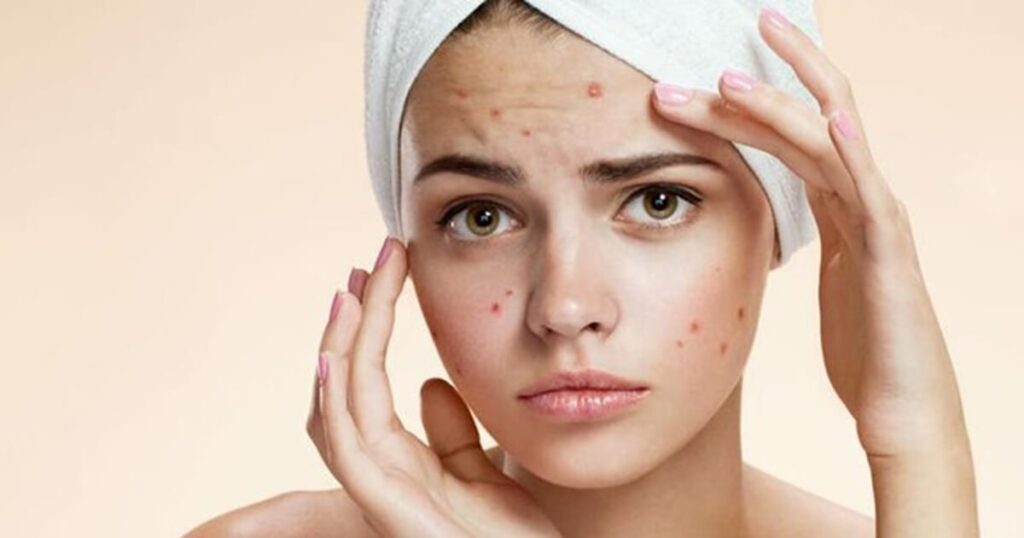Acne prone skin
It is generally accepted that sensitivity is a quality characteristic of dry, thin skin, while oily skin is distinguished by endurance and is much less susceptible to reactions to external stimuli.
However, oily, acne-prone skin can also be sensitive. As cosmetologists note, her sebaceous glands produce too much sebum, which entails a change in the composition of sebum and negatively affects the barrier functions of the skin.
In addition, the owners of acne-prone skin, without knowing it, make fatal mistakes in basic care, which aggravate skin sensitivity, and even in frequent cases are its main provocateurs.
Acne prone skin care
While it’s not easy to make problematic and acne-prone skin heal completely, timely treatment with medications, as well as non-pharmacological treatments, can be very effective in preventing new blemishes and scarring.
Before deciding whether to use any non-drug treatment, it is important to identify the symptoms that are causing concern. Treatments for problematic and acne-prone skin, and mild to moderate acne usually address one or more skin problems.

They act by:
- reduce the formation of sebum, thereby controlling seborrhea.
- accelerate the exfoliation of skin cells, help fight hyperkeratosis.
- fight bacterial infection caused by the multiplication of microorganisms.
- can even reduce inflammation, which in turn will promote the healing of blemishes, papules, and pustules.
It is also important to distinguish between impure and acne-prone skin and sensitive skin reacting with pimples or rosacea. The papules and pustules that appear in hypersensitivity disorders of Rosacea, for example, are acne-like in appearance, but there are no clogged pores, the skin is dry rather than oily, and patches of Rosacea do not leave scars.
The main causes and pathogens of problem skin and acne
Problematic and acne-prone skin is a very common skin condition that usually develops during puberty when boys and girls experience major hormonal changes. Hormones called androgens stimulate the sebaceous glands, and they secrete more sebum than is really necessary (seborrhea). Seborrhea can also interfere with normal skin exfoliation.
When the skin produces excess sebum and doesn’t get rid of dead skin cells enough, they can build up in the hair follicles and form soft plugs. These plugs can cause the wall of the follicle to bulge and form white acne, or the plug can open to the surface of the skin and darken, resulting in black acne.
Pimples (papules or pustules) are raised red patches of skin with a white dot in the center that develop when blocked hair follicles become inflamed or infected. Their blockage and inflammation, which develops deep in the tissues of the sebaceous glands, causes the formation of edema under the surface of the skin, which is called cysts.
Problematic skin is most commonly found on the face, shoulders, chest, and back, as these areas produce the most sebum.
Hormones. Although problematic and acne-prone skin is most common among teenagers, it is also increasingly common among adults, especially women who experience hormonal changes during pregnancy, menstruation, or as a result of alternating hormonal conditions such as polycystic ovary syndrome.
Myths about acne-prone skin
In addition to reliable facts, there are many fictions around the causes of acne. These unfounded myths unfairly “blame” the patient himself for his condition. For example, people with acne-prone skin are often told that they are unkempt or don’t wash their skin often enough. But washing too often is actually more dangerous for acne-prone skin, as it gets irritated from excessive rubbing. Patients are also accused of being malnourished.
While a healthy diet is always preferred, there is little evidence that fatty foods or chocolate increase acne symptoms.
Non-drug treatment for problematic and acne-prone skin
Treatment for moderate to severe acne may require medical attention from a doctor or dermatologist, but moderate acne can usually be treated non-pharmacologically.

Pharmacies offer a wide range of cosmetic skin care products, including:
- Topical antibacterials such as Decandiol, which can kill bacteria
- Licochalcone A, an effective anti-inflammatory agent
- Carnitine, which reduces sebum secretion
- Lactic acid as a keratolytic agent
They can be used on any affected area: on the face, shoulders, chest or back. These products can also be used as additional care for standard medical treatment to prevent side effects such as dry skin or sun sensitivity.
In addition to the creams and gels that are used to treat the symptoms of acne-prone skin, there are also products that can help mask unwanted effects. For example, non-comedogenic makeup can be used to hide facial blemishes, but it’s important to remove it at the end of the day with a gentle cleanser. Men can also use camouflage makeup to hide redness and even out the complexion. Camouflage agents can be applied locally on small affected areas.
Contrary to myth, neither toothpastes nor aspirin masks are effective for drying stains. There is no medical evidence for this, moreover, it can be harmful. Toothpaste contains substances that can irritate and damage the skin.
In addition, it is always advisable to eat healthy, stay away from places where the skin is exposed to smoke or dirt, and, given the psychological consequences of problematic skin, do everything to increase self-esteem and self-confidence.
Daily cleansing and care procedures can take several weeks, so in order to get a positive result, be patient and persistent.
